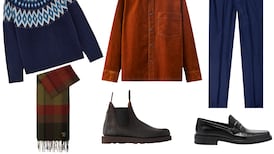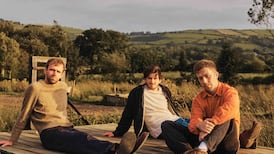Legs feel weak and heavy. Arms full of burning lactic acid. Chest feels tight and lungs ache. Eyes filled with hard, driving rain. When the hell is the final whistle coming?
It’s 4pm on a wet Saturday out in a field in Reading, home of St Anthony’s GAA club. I’m in the middle of my first Gaelic football game.
The Tuesday before, I arrive at Mitcham Rugby Club in south London, training ground of Round Towers GFC for my first session with a GAA club. I’ve never picked up a ball with “O’Neills” written on it before.
I’ve seen only a handful of games, most of them featuring London during their heroic performances in this year’s Connacht championship. But both sides of my family represented their counties, including my grandfather, William “Spider” Kelly, who was an accomplished footballer for Wexford.
So there’s some ability in the blood. Born and raised in London, I’ve played soccer since I was five, as a centre-half who switched to goalkeeper in my teens. I also played rugby at school, so I can catch, kick and throw myself about a bit.
The first drill is a simple exercise I’ve done countless times in football (sorry, soccer) practice, involving passing techniques. Then comes my first attempted hand-pass. It sprays wildly over the head of the player less than 10 yards away. Over-compensating, my next effort dies with a whimper, dropping short to the bemusement of my new teammate.
I hold my own in a mid-range kicking exercise, which increases my confidence slowly. However, any new-found belief is shattered soon after the coaches call a practice match. I’m ordered to mark a lively guy called JP. He gets away from me three times in as many opening minutes, and his pace leaves me chasing shadows as he racks up point after point.
I get my boot to the ball a couple of times, complete a few hand-passes and, somehow, even get a goal after a deft chip over the onrushing keeper. Maybe Saturday won’t be too bad. How hard can it be?
Seriously hard, it turns out. On Saturday, I’m drafted into Round Towers’ squad as one of two subs. In the second half I’m thrown on at right corner forward. I don’t get anywhere near the ball for about the first 10 minutes. The most action I get is after a look over at our photographer Malcolm, who nods towards the heart of the action as if to say: “You made me come out early in the rain for this? Get stuck in!”
Then a few minutes later I’m forced to do just that. My first touch is unsuccessful, as I try to pick up a loose ball rolling towards me in open play. I’ve learnt at training that a ball on the ground has to be scooped up by bending down and deftly using the foot and the hands in unison. It isn’t as easy as it looks, and with my 6ft 5in frame, such a movement leaves me vulnerable to nearby opponents – like a spindly-legged deer being caught by lions in the African savannahs.
Two predators in light blue shirts immediately appear as I bend down awkwardly and lose the ball under my feet. I get a smash on the forearm from one of the big lumps, something which I can still feel as I type this three days later.
I’m called into action again soon after, and I keep a difficult ball in at the far sideline and then thread a decent pass infield, which sets my team-mate free for a shot at goal. I then get my hands on the ball in a bit of space and manage a cross-shot from out wide, which might just about look like a neat pass.
We dig in to some spirited defending after a third goal gives us a strong lead. The final score is a flattering 3-7 to 1-6 win.
Toasting our victory in the Gateway pub in Reading, there’s time to reflect on some of the differences between playing soccer and Gaelic.
The first thing is the ball. It’s noticeably heavier. Gaelic is played fast and you’re constantly on the move. There seems to be more running and fewer stoppages.
My first 35 minutes felt longer than any 45-minute half I’d played in soccer. Because points are on offer from a distance out, you have to mark players hard and stick with them, whereas in soccer it’s possible to double up with a teammate, or mark zonally in many areas of the pitch where the action isn’t taking place.
Kicking, which I always thought I was pretty good at, is a different game with tired legs. The presence of defensive players throwing themselves at you makes it hard to maintain your balance – and a cool head – when lining up a shot at goal.
The “fluid” nature of some rules is notable. Indiscretions seemed to be waved on by the officials, ranging from players taking five or six steps with the ball in their hands (the maximum is four) to consecutive bounces being waved on to punches landing without fuss.
Did I find myself out of my depth in my first game? Absolutely. But after my first taste I am definitely a convert. I feel happy to have joined a tough and competitive sport where the motivation for playing at any level is never in question.
But I won’t turn my back on soccer just yet. Soccer is slicker and less messy. And you don’t have the insurance policy of being able to hoof it over the bar for a point should you not fancy going for goal.









